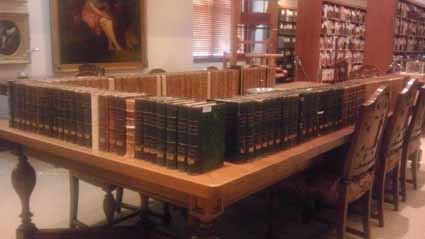 Special Collections recently added the early issues of the Blackwood’s Edinburgh Magazine , 1817-1899. It is a British magazine of literary publications and miscellany which was originally founded by publisher William Blackwood. The magazine is also referred to as Maga.
Special Collections recently added the early issues of the Blackwood’s Edinburgh Magazine , 1817-1899. It is a British magazine of literary publications and miscellany which was originally founded by publisher William Blackwood. The magazine is also referred to as Maga.
Hallå!
I have been updating the records in Blais for Special Collections’ Nordic Collection, making the information more accurate and also ensuring that the links from Blais to our online requesting system, Aeon, are working. While I have been working on this project, I have learned a little about this unique collection and its history. Special Collections has more than thirty thousand volumes on Nordic history, literature, religion, education, politics, and economics. Most of the materials are in Danish, Swedish, or German. The collection began with a donation from Waldemar Westergaard, who was a professor at Pomona and UCLA, and Special Collections has added significantly to this collection with the acquisition of the personal libraries of David Bjork and other scholars.
You can read more about the highlights of the Nordic Collection here.
And for some information on the background of the Westergaard donation, there is an interesting article by Franklin Scott in Scandinavian Studies, Vol. 41, No. 4 (Nov. 1969). If you have access to JSTOR, you can check it out here.
Newspaper project
Jennifer and I have been working with two student staff–Jamella and Jessica–on a project to better protect and organize Special Collection’s unbound newspapers. There are two goals for this newspaper project: creating a safer storage system that meets modern preservation standards and generating a finding aid for the Online Archive of California (OAC).
We are uncovering some interesting papers as we work on this project! Below is just a small selection of our newspaper collection. Special Collections also has a large collection of Mexican newspapers and a collection called the “radical newspapers”, which is a selection of 20th century political newspapers and newsletters. We welcome enquiries by students, staff, and visitors who would like to use our newspapers!
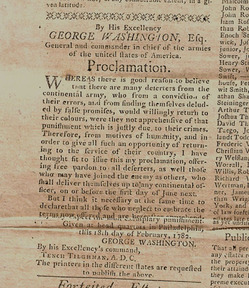
A notice by George Washington offering pardon to deserters, from The Freeman’s Journal: Or The North-American Intelligencer, Wednesday, February 27, 1782
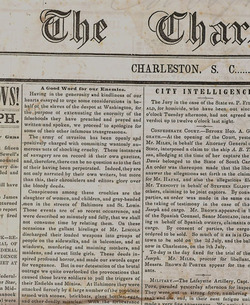
A selection from an editorial trying to contextualize the actions of the “slaves of the despot at Washington”, from The Charleston Daily Courier (of the Confederate States of America), Thursday, June 27, 1861
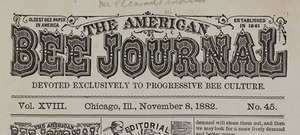
One of our more unusual titles, the distinguished, “oldest bee paper in America”
Map of Namibian diamond fields in the William L. Honnold papers
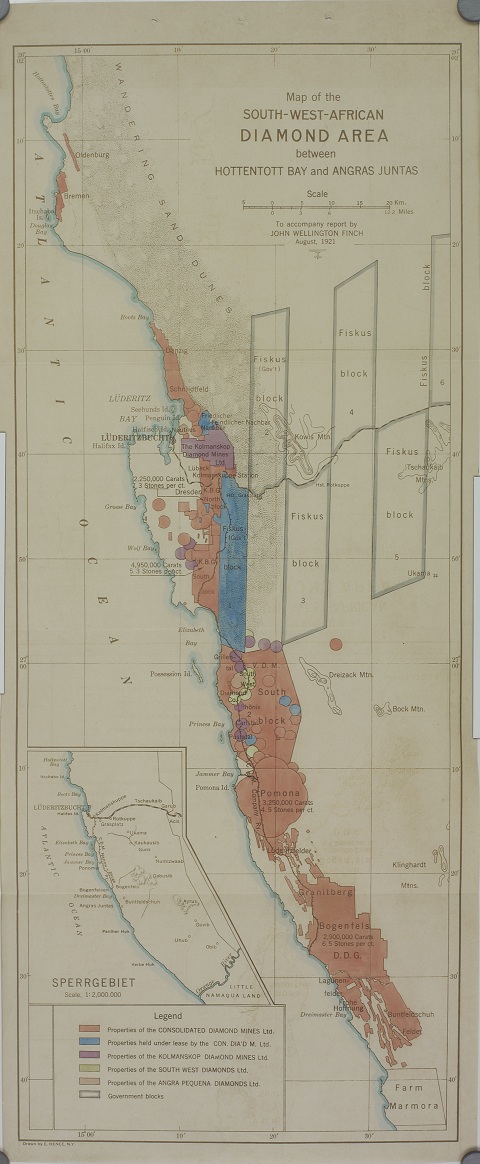
Honnold/Mudd Special Collections holds materials from all over the world. This map of the diamond regions of what is now Namibia is part of a report compiled in 1921 for Consolidated Diamond Mines of South West Africa, Ltd. (since 1994 Namdeb Diamond Corporation), founded by Mr. (later Sir) Ernest Oppenheimer.
The report is part of the papers of William Lincoln Honnold (1866-1950), mining engineer and together with Oppenheimer co-founder of Anglo American Corporation. Born in Illinois, Honnold lived in South Africa from 1902 until 1915, when he moved to London to serve as London director of his friend Herbert Hoover’s Committee for Relief of Belgium (in 1917, he returned to the United States to serve as New York director for the same organization). Upon retiring in the early 1920s, Honnold moved to California, where he and his wife, Caroline, became dedicated supporters of higher education, in particular Caltech and the Claremont Colleges. Honnold was a member of the first Board of Fellows of Claremont College, and also served as a member of the Pomona College Board of Trustees. He and his wife provided the funds to build Honnold Library. Honnold was also a close friend and colleague of the Mudd family, some of whose papers are also in Special Collections.
The Honnold papers contain a wealth of papers and photographs documenting mining in the United States and Southern Africa in the late 19th and early 20th centuries, life in Southern California in the 1920s and 1930s, famous individuals such as Oppenheimer and Hoover, and the history of the Claremont Colleges. The collection is currently being processed, and a finding aid will be available shortly.
Darlene Nicgorski papers
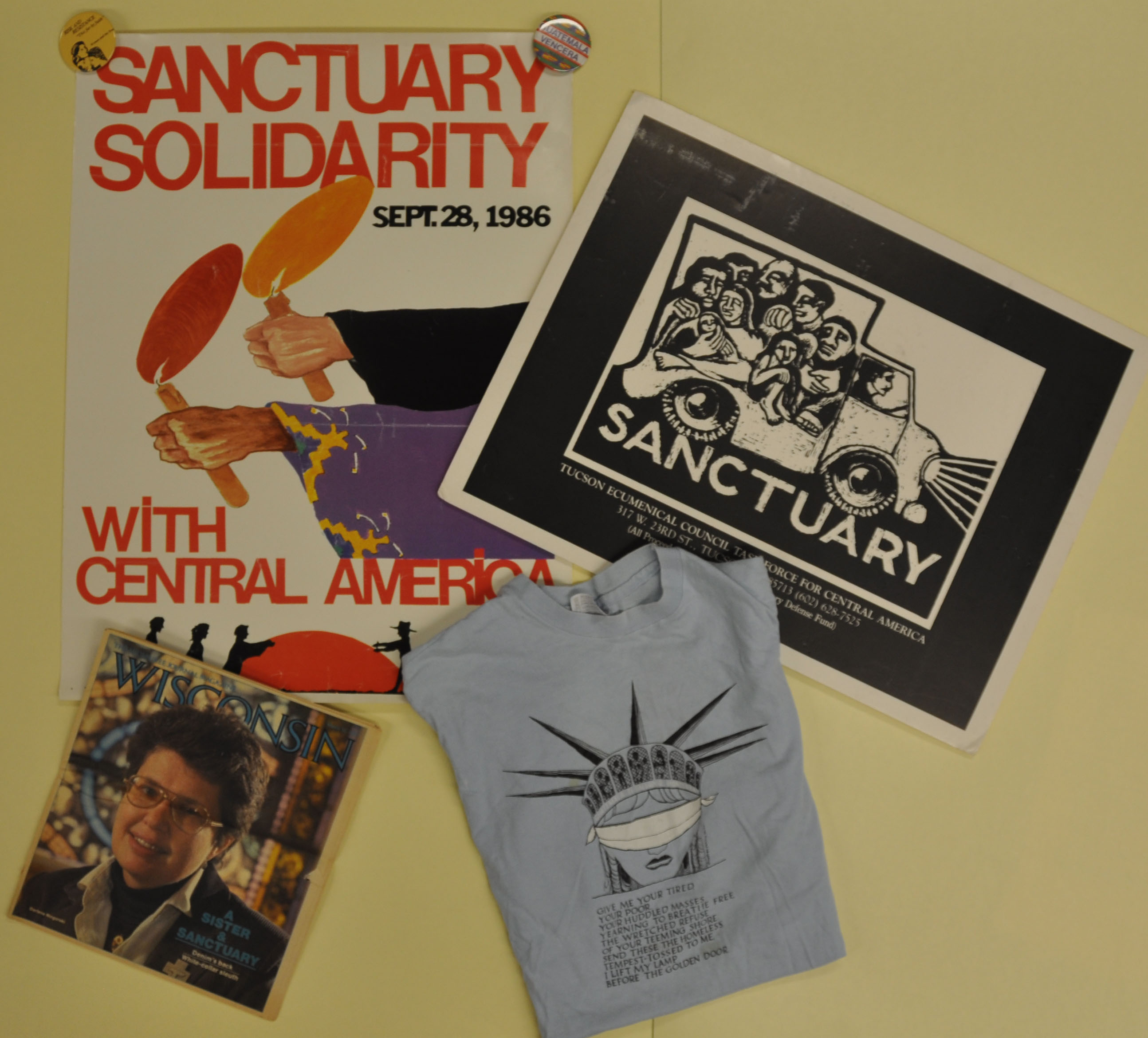
The papers of Darlene Nicgorski, a leader of the Sanctuary movement for Central American refugees in the United States in the early 1980s, have been processed by Honnold/Mudd Special Collections staff, and a finding aid is now available online at the Online Archive of California (OAC).
Darlene Nicgorski was born and educated in Wisconsin. She first became involved with the people of Central America in 1980, when, as a member of the School Sisters of St. Francis, she answered the call to help members of her congregation in Guatemala set up a preschool program there. Forced to flee Guatemala after the assassination of her mentor, Padre Tulio, barely six months after her arrival, Sister Darlene, while visiting her family in Phoenix, Arizona, became involved with the Sanctuary movement. The Sanctuary movement, which at its height in 1985 had approximately 500 member sites across the United States, had begun in 1980, when a handful of residents of Tucson, Arizona, in violation of United States law, began providing legal, financial, and material aid to Central American refugees. In March 1982, on the second anniversary of Archbishop Oscar Romero’s assassination, the Rev. John Fife declared his congregation, the Southside Presbyterian Church in Tucson, the first public sanctuary in the United States. In 1983, Sister Darlene was asked by the Chicago Religious Task Force on Central America to coordinate the movement of refugees to Sanctuary congregations throughout the country. Less than two years later, the Immigration and Nationalization Service cracked down on the Sanctuary Movement, and in January 1985, Sister Darlene was among 16 arrested and charged with 71 counts of conspiracy and encouraging and aiding illegal aliens to enter the United States. The trial in Tucson, which attracted considerable national attention, ran from October 1985 to May 1986. Sister Darlene was convicted of conspiracy to violate immigration law and two counts each of transporting and aiding and abetting the harboring of illegal aliens. Facing a maximum sentence of 25 years in prison, she was given a suspended sentence and five years’ probation.
A popular spokesperson for the Sanctuary movement since her arrest, Sister Darlene fulfilled over 200 speaking engagements between 1985 and 1988. She also received many awards, including Ms magazine’s 1986 Woman of the Year, the American Civil Liberties Union of Northern California’s Earl Warren Civil Liberties Award for 1986, and the Women’s Ordination Conference Prophetic Figure Award for 1987. She was the first Roman Catholic to receive Union Theological Seminary’s Union Medal.
After the trial, Sister Darlene relocated to Massachusetts, where she continued to write about her experiences from a feminist faith perspective. After increasingly questioning the Roman Catholic Church’s attitudes regarding sexuality and women, she left the School Sisters of St. Francis in 1987. After leaving the religious life, Nicgorski held positions as a teacher and educational consultant; she retired in 2011 after 22 years in human resources. She and her life partner, Chris, plan to move to Claremont in the near future.
Darlene Nicgorski’s papers comprise writings, correspondence, newspaper and periodical clippings, legal papers, flyers, programs, photographs, audiotapes and videotapes, and graphic and other materials relating to her life and career. The materials fall into three broad groups:
The materials documenting the trial of Nicgorski and her co-defendants in Federal District Court in Tucson, Arizona (the “Arizona Sanctuary Trial”), their conviction and sentencing, and their unsuccessful appeal to the 9th Circuit Court of Appeals (1985-1989) include relatively few court documents, or documents relating to the defendants as a group, but focus on Nicgorski and her defense, prepared and undertaken by Michael Altman. Especially noteworthy are the original microcassettes and transcripts of Nicgorski’s daily reflections on the course of the trial; her statements to attorneys and the other defendants, and her public statements during the trial; and interviews of Nicgorski and several witnesses by defense counsel Michael Altman. Other significant materials include post-conviction letters concerning Nicgorski addressed to Judge Carroll for his consideration when determining her sentence; a large number of letters of support addressed to Nicgorski; and two extensive collections of clippings from newspapers and periodicals, one prepared by Nicgorski herself, the other by the Sanctuary Defense Fund’s media office.
Materials documenting Nicgorski’s involvement with the Sanctuary movement (1981-1987) include studies, flyers, pamphlets, and special issues of periodical publications, that investigate and report on the issues confronting refugees from Central America, their attempts to escape repression in their homeland, the movement in the United States to provide asylum and sanctuary for these refugees, United States government policy on Central America, and the actions of the Immigration and Naturalization Service. Materials of particular significance include audiotaped interviews in the early 1980s with refugees; photographs documenting Nicgorski’s work in Central America and with Central American refugees in Arizona; and extensive records–including some audiotapes and videotapes–of Nicgorski’s speaking engagements. Other significant materials include publicity, programs, and liturgies for prayer and worship services for the movement; the Freedom Train Sanctuary caravan from Phoenix to Northampton, Massachusetts, in the summer of 1987; posters, newspaper political cartoons, and other graphics concerning the movement; and writings by, and correspondence with, others working with Central American refugees.
Materials documenting Nicgorski’s relationship with the order of School Sisters of St. Francis (1970-1987) include a substantial number of records relating to the order’s support for the Sanctuary movement and for Nicgorski during her trial. Among these records are official letters of support from the order, private letters from individual members of the order, and a detailed media packet that carefully summarizes Nicgorski’s life, the circumstances that led Central Americans to seek refuge in the United States, the Sanctuary movement, and the Roman Catholic Church’s support for the movement. Materials documenting Nicgorski’s personal relationship to the order include her profession, personal papers, and materials relating to her 1987 separation from the order.
The Darlene Nicgorski papers, while documenting an important 20th century social movement, also have special contemporary relevance in a time when Arizona, the birthplace of the movement welcoming political refugees from Central America, is now at the heart of the heated debate on the problem of illegal immigration, and when the social activism of Roman Catholic women religious is being criticized by the church hierarchy. We thank Darlene Nicgorski for sharing the records of her experiences with us, and invite anyone interested in using the collection to sign on to Aeon, our new Special Collections Request System, and click on the “Register as a reader and make your Reading Room requests” button), to access the collection.
Welcome back, students!
Huzzah and welcome to our new students and to our returning students!
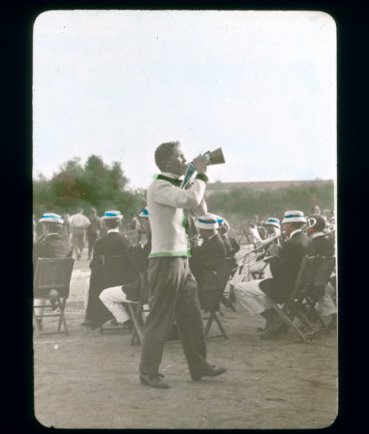
New Exhibition: Stargazing and Sky Watching Through the Ages
New exhibition at the Clark Humanities Museum
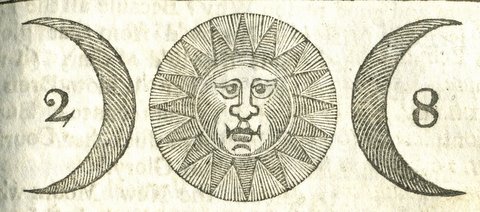
Stargazing and Sky Watching Through the Ages
March 21, 2011 – May 14, 2011
Clark Humanities Museum, Scripps College
People throughout history have looked to the sky for many reasons: to chart the heavens, to navigate the seas, to establish their place in the universe, even to predict the future. To read and interpret the heavens and divine our place within the universe fascinates us today more than ever.
On view in this exhibition on the history of astronomy are rare and significant items from Special Collections at Honnold/Mudd and Denison libraries, from Brackett Observatory at Pomona College, and from the Williamson Gallery, Scripps College: works of significant, historical astronomers and astrologers, celestial maps and charts of the constellations, artistic depictions of the heavens, and vintage astronomical instruments and artifacts, from the 15th through the early 20th centuries.
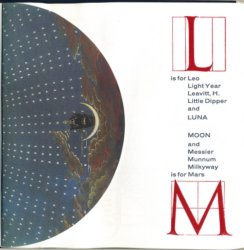
The exhibition was organized by Carrie Marsh, Honnold Library Special Collections and Professor Bryan Penprase, Frank P. Brackett Professor of Astronomy and Chair, Department of Physics and Astronomy, Pomona College, with the kind assistance of Dr. Noel Swerdlow of Cal Tech.
29 March 2011, Exhibition Opening Reception, 4:15-6:00 p.m., Clark Humanities Museum, Scripps College. Refreshments will be served.
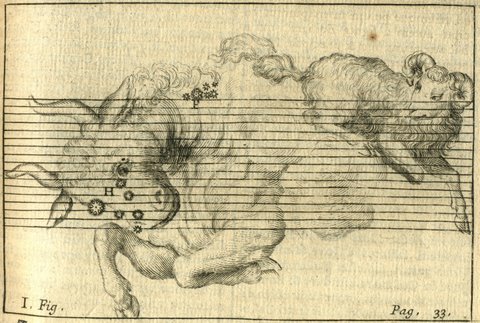
King James Bible (1611)
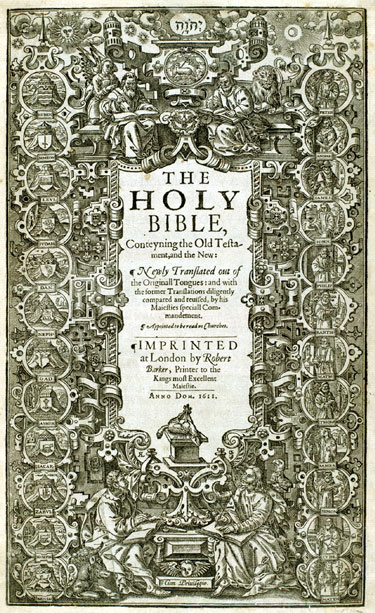
Probably the most influential–and most printed–book, the Authorized King James Bible (KJV) is 400 this year. There are scads of new popular and scholarly articles and books commemorating this anniversary being published this year. To see the real thing, come by Special Collections to see the first KJV, printed by Robert Barker in 1611. Call number BS 170 1611X
To read more about it, here’s the New York Times article about the KJV at 400 by Pomona College alum Verlyn Klinkenborg.
new exhibit — Memory Keepers
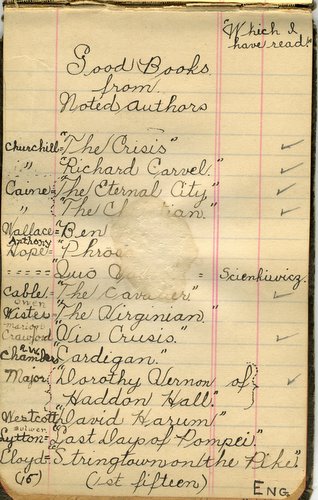
above: from John Myers’ travel journal, from Ohio to San Francisco
Memory Keepers
September 16, 2010-November 5, 2010
Honnold/Mudd Library
The focus of this exhibition is personal diaries and journals, some of the unique primary sources Special Collections is privileged to collect and preserve for research and teaching. Each diary selected reflects the events, the mood, and the perception of reality experienced by the writers and bear historical witness to what life was like during particular periods.
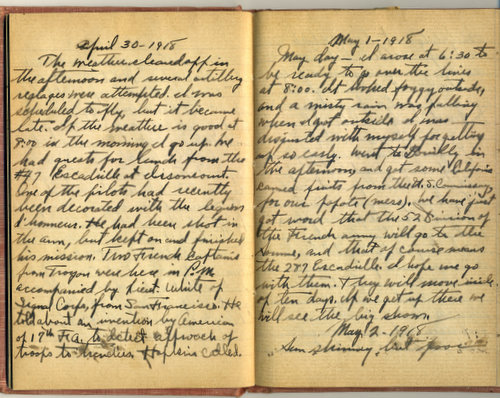
above: from H.T. Douglas’ Personal Journal of World War I
The diaries and journals on view are from our holdings of personal papers and family archives, company records, Colleges’ archives, and other manuscript collections. These collections contain rich personal stories of China in the early 20th century, the American Civil War, gold fields of Alaska, travels in 19th century America, Victorian theater, and other historical moments and events.
FMI: Special Collections, 909-607-3977 and spcoll@cuc.claremont.edu
W. D. Macray’s Life of Milton
Like many special collections, we have had a formidable backlog of uncataloged books and unprocessed collections, and we’ve made great strides over the past several years in providing access to many of these hidden collections. As we move through the backlog, we find all kinds of treasures and rarities; once in a while we find something endearing and even eccentric.
A particular example of the endearing and eccentric has been found among the rare book collection of Dr. Walter Lindley and his son Francis Haynes Lindley: W. D. Macray’s heavily annotated copy of Some Account of the Life and Writings of John Milton by H. J. Todd (London, 1826). Macray wrote his notes on little scraps of paper and pasted them into the volume; he also penciled in notes on the margins of the book, and pasted in clippings and writings inside the book covers. Here’s an example:
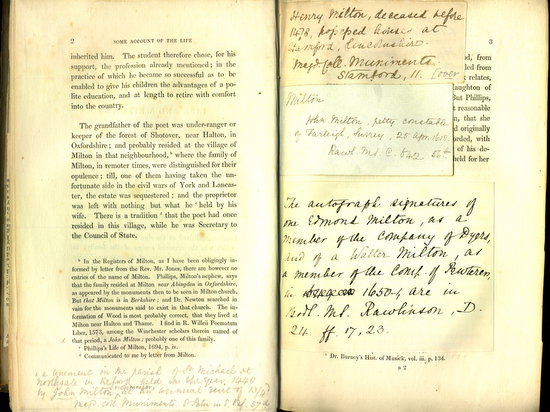
Call Number Hon Spcl Lindley PR 3581 T6 1826
William Dunn Macray was a British librarian, historian, and bibliographer during the 19th century. Among his contributions to scholarship are several volumes of catalogs of private and university library collections, especially at Oxford colleges, and Annals of the Bodleian Library. On the flyleaf of the Life of Milton is a note written by Macray from 1846, when he was a student attending Magdalen College.
The Francis Haynes Lindley Memorial Collection was donated to Honnold Library by Walter Lindley and F. Haynes Lindley, Jr. in memory of their father, Francis Haynes Lindley. The 3,000 volume collection was begun by Dr. Walter Lindley, physician and civic leader in early 1900s Los Angeles, who had a life-long passion for books and reading, especially Shakespeare, which he passed to his son, Francis Haynes Lindley. The Lindley Collection covers a wide range of subjects including history, literature, poetry, drama, and travel. It is particularly strong in Shakespeare, Milton, dramatists through Sheridan, Samuel Johnson, and Sir Richard Burton.